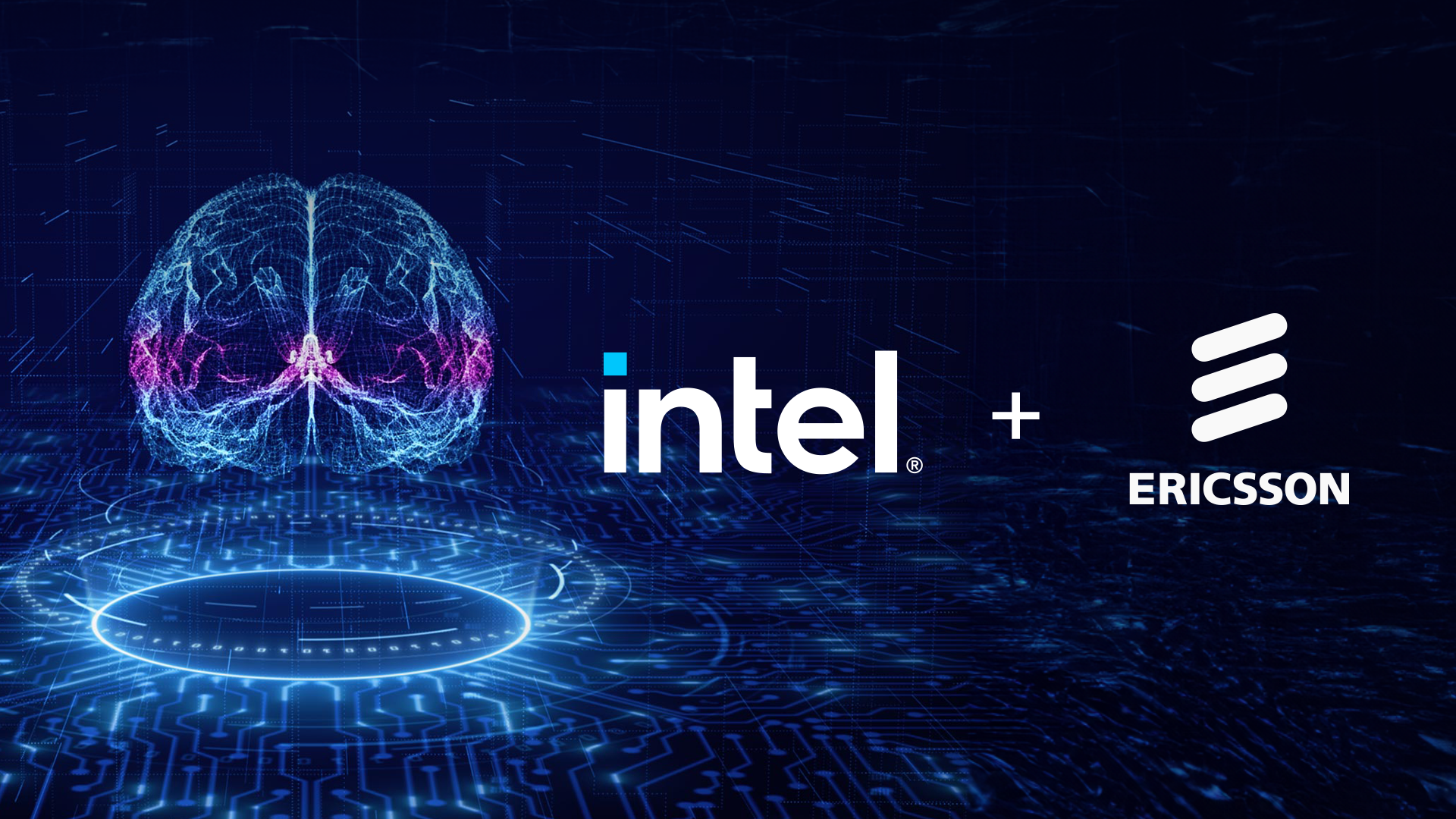Although it would be grossly negligent for the Ericsson Team to test only the Intel chip (which according to BRN is still in research) when there are others available.Here is a follow-up of my post on Ericsson (see above).
When I recently searched for info on Ericsson’s interest in neuromorphic technology besides the Dec 2023 paper, in which six Ericsson researchers described how they had built a prototype of an AI-enabled ZeroEnergy-IoT device utilising Akida, I not only came across an Ericsson Senior Researcher for Future Computing Platforms who was very much engaged with Intel’s Loihi (he even gave a presentation at the Intel Neuromorphic Research Community’s Virtual Summer 2023 Workshop), as well as an Intel podcast with Ericsson’s VP of Emerging Technologies, Mischa Dohler.
I also spotted the following LinkedIn post by a Greek lady, who had had a successful career at Ericsson spanning more than 23 years before taking the plunge into self-employment two years ago:
View attachment 61042
View attachment 61043

Since Maria Boura concluded her post by sharing that very Intel podcast with Mischa Dohler mentioned earlier, my gut feeling was that those Ericsson 6G researchers she had talked to at MWC (Mobile World Congress) 2024 in Barcelona at the end of February had most likely been collaborating with Intel, but a quick Google search didn’t come up with any results at the time I first saw that post of hers back in March.
Then, last night, while reading an article on Intel’s newly revealed Hala Point (https://www.eejournal.com/industry_...morphic-system-to-enable-more-sustainable-ai/), there it was - the undeniable evidence that those Ericsson researchers had indeed been utilising Loihi 2:
“Advancing on its predecessor, Pohoiki Springs, with numerous improvements, Hala Point now brings neuromorphic performance and efficiency gains to mainstream conventional deep learning models, notably those processing real-time workloads such as video, speech and wireless communications. For example, Ericsson Research is applying Loihi 2 to optimize telecom infrastructure efficiency, as highlighted at this year’s Mobile World Congress.”
The blue link connects to the following article on the Intel website, published yesterday:

Ericsson Research Demonstrates How Intel Labs’ Neuromorphic AI Accelerator Reduces Compute Costs
Philipp Stratmann is a research scientist at Intel Labs, where he explores new neural network architectures for Loihi, Intel’s neuromorphic research AI accelerator. Co-author Péter Hága is a master researcher at Ericsson Research, where he leads research activities focusing on the applicability...community.intel.com
Ericsson Research Demonstrates How Intel Labs’ Neuromorphic AI Accelerator Reduces Compute Costs
Subscribe
Article Options


Philipp_Stratmann
Employee
04-17-2024
00344
Philipp Stratmann is a research scientist at Intel Labs, where he explores new neural network architectures for Loihi, Intel’s neuromorphic research AI accelerator. Co-author Péter Hága is a master researcher at Ericsson Research, where he leads research activities focusing on the applicability of neuromorphic and AI technologies to telecommunication tasks.
Highlights
- Using neuromorphic computing technology from Intel Labs, Ericsson Research is developing custom telecommunications AI models to optimize telecom architecture.
- Ericsson Research developed a radio receiver prototype for Intel’s Loihi 2 neuromorphic AI accelerator based on neuromorphic spiking neural networks, which reduced the data communication by 75 to 99% for energy efficient radio access networks (RANs).
- As a member of Intel’s Neuromorphic Research Community, Ericsson Research is searching for new AI technologies that provide energy efficiency and low latency inference in telecom systems.
Using neuromorphic computing technology from Intel Labs, Ericsson Research is developing custom telecommunications artificial intelligence (AI) models to optimize telecom architecture. Ericsson currently uses AI-based network performance diagnostics to analyze communications service providers’ radio access networks (RANs) to resolve network issues efficiently and provide specific parameter change recommendations. At Mobile World Congress (MWC) Barcelona 2024, Ericsson Research demoed a radio receiver algorithm prototype targeted for Intel’s Loihi 2 neuromorphic research AI accelerator, demonstrating a significant reduction in computational cost to improve signals across the RAN.
In 2021, Ericsson Research joined the Intel Neuromorphic Research Community (INRC), a collaborative research effort that brings together academic, government, and industry partners to work with Intel to drive advances in real-world commercial usages of neuromorphic computing.
Ericsson Research is actively searching for new AI technologies that provide low latency inference and energy efficiency in telecom systems. Telecom networks face many challenges, including tight latency constraints driven by the need for data to travel quickly over the network, and energy constraints due to mobile system battery limitations. AI will play a central role in future networks by optimizing, controlling, and even replacing key components across the telecom architecture. AI could provide more efficient resource utilization and network management as well as higher capacity.
Neuromorphic computing draws insights from neuroscience to create chips that function more like the biological brain instead of conventional computers. It can deliver orders of magnitude improvements in energy efficiency, speed of computation, and adaptability across a range of applications, including real-time optimization, planning, and decision-making from edge to data center systems. Intel's Loihi 2 comes with Lava, an open-source software framework for developing neuro-inspired applications.
Radio Receiver Algorithm Prototype
Ericsson Research’s working prototype of a radio receiver algorithm was implemented in Lava for Loihi 2. In the demonstration, the neural network performs a common complex task of recognizing the effects of reflections and noise on radio signals as they propagate from the sender (base station) to the receiver (mobile). Then the neural network must reverse these environmental effects so that the information can be correctly decoded.
During training, researchers rewarded the model based on accuracy and the amount of communication between neurons. As a result, the neural communication was reduced, or sparsified, by 75 to 99% depending on the difficulty of the radio environment and the amount of work needed by the AI to correct the environmental effects on the signal.
Loihi 2 is built to leverage such sparse messaging and computation. With its asynchronous spike-based communication, neurons do not need to compute or communicate information when there is no change. Furthermore, Loihi 2 can compute with substantially less power due to its tight compute-memory integration. This reduces the energy and latency involved in moving data between the compute unit and the memory.
Like the human brain’s biological neural circuits that can intelligently process, respond to, and learn from real-world data at microwatt power levels and millisecond response times, neuromorphic computing can unlock orders of magnitude gains in efficiency and performance.
Neuromorphic computing AI solutions could address the computational power needed for future intelligent telecom networks. Complex telecom computation results must be produced in tight deadlines down to the millisecond range. Instead of using GPUs that draw substantial amounts of power, neuromorphic computing can provide faster processing and improved energy efficiency.
Emerging Technologies and Telecommunications
Learn more about emerging technologies and telecommunications in this episode of InTechnology. Host Camille Morhardt interviews Mischa Dohler, VP of Emerging Technologies at Ericsson, about neuromorphic computing, quantum computing, and more.
While Ericsson being deeply engaged with Intel even in the area of neuromorphic research doesn’t preclude them from also knocking on BrainChip’s door, this new reveal reffirms my hesitation about adding Ericsson to our list of companies above the waterline, given the lack of any official acknowledgment by either party to date.
So to sum it up: Ericsson collaborating with Intel in neuromorphic research is a verifiable fact, while an NDA with BrainChip is merely speculation so far.
I very much doubt they would not be aware of BRN. I would also be very surprised if Ericsson and other telcos have not had high level contact from BRN.
The word slipped that we were tied with Mercedes. After that you can bet that every Auto is testing AKIDA. No one wants to be caught short.
The use for AKIDA in Autos is obvious.
For the 'layman' it's a little harder to identify Telco company uses.
BRN has worked hard to set up an eco system and together with enormous industry exposure its hard to imagine any decent Research departments of big business would be unaware of BRN. It would be just a matter of how, if at all, hey see AKIDA improving their business.



